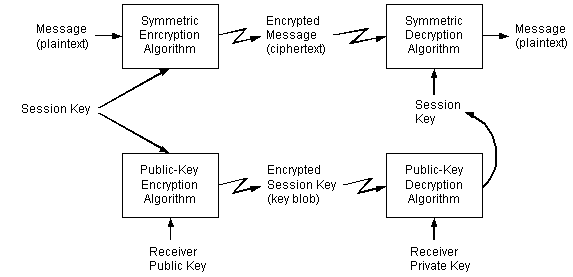 To send and encrypted session key
To send and encrypted session keyThe easiest way to send encrypted messages to another user is to send the message (encrypted with a random session key) along with the session key (encrypted with the receiver's key exchange public key). These are the steps for sending an encrypted session key:
 To send and encrypted session key
To send and encrypted session keyThe following illustration shows how to use this procedure to send an encrypted message.

This approach is vulnerable to at least one common form of attack. An eavesdropper can acquire copies of one or more encrypted messages and the encrypted keys. Then, at some later time, the eavesdropper can send one of these messages to the receiver and the receiver will have no way of knowing the message did not come directly from the original sender. This risk can be reduced by timestamping all messages or by using serial numbers. Using a three-phase key exchange protocol will eliminate this problem entirely. See Sample Three-Phase Exchange Protocol.